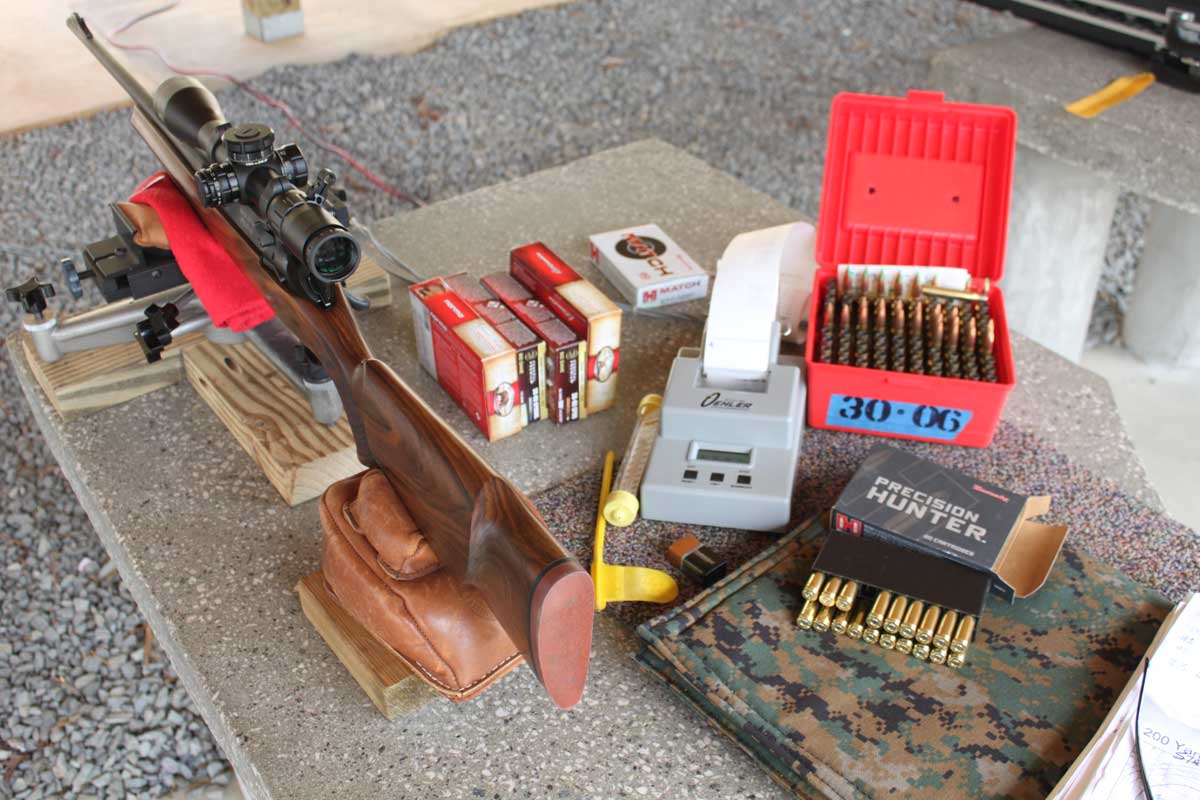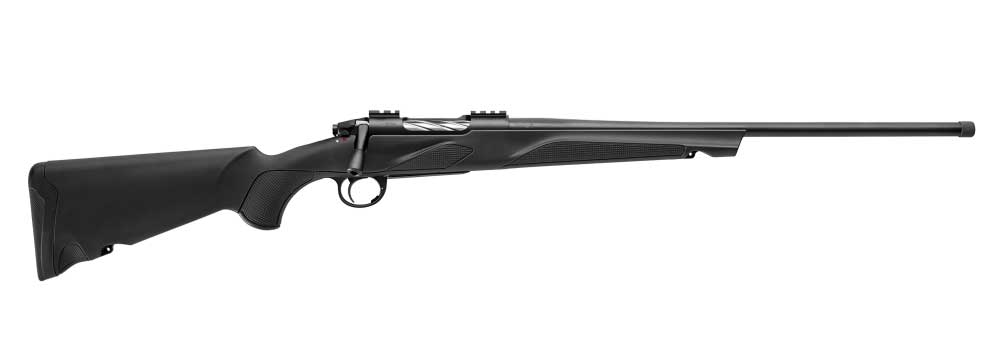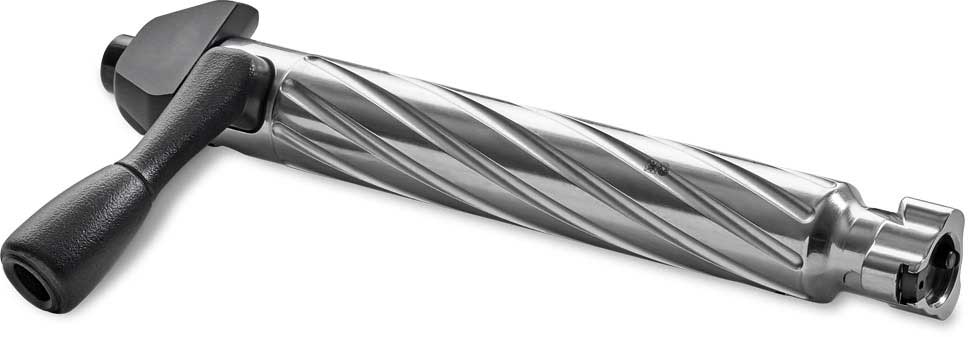New Italian Imports

If I were to ask what European countries comes to mind if the subject was bolt action centerfire rifles, Italy would be pretty low on the list. It’s not that they don’t manufacture any such rifles in Italy — Antonio Zoli of Brescia has been making a replica of the Swedish Carl Gustaf rifle called the AZ-1900 for decades; it’s fairly popular in Europe, but hardly known here in the States. Consider too that it wasn’t until 1987 the Sabatti’s Rover became the first bolt action centerfire rifle to be entirely designed and manufactured in Italy!
Shotguns, of course, are another matter. Some of the world’s finest over/under, side-by-side and semi-auto shotguns come from Italy; it’s just that this lovely country, which I re-visit at every opportunity, simply isn’t known for producing bolt action rifles.
That may be changing, however, for this year we’ve seen not one, but two new bolt guns come out of Italy: the Sabatti Saphire and the Franchi Momentum, both of which caused quite a bit of interest at SHOT, but each for different reasons.
Of the two, the Saphire is the more interesting because: 1) it offers switch-barrel/caliber capability; 2) its receiver is aluminum rather than steel; and 3) it’s the first production-grade rifle to employ radiused rifling (if that’s not a word, I’m coining it!). Sabatti calls it “Multi-Radial” (MMR) and it consists of simply rounding off the sharp 90-degree edges at the top of the lands, and the inside corners at the bottom. However, the line drawing in the Sabatti catalog depicting what their MMR rifling looks is very misleading. According to it, in cross-section the bore is pictured as a subtle wavy line that not even remotely resembles discernible lands or grooves. Imagine my surprise then, when I removed the bolt on our test gun — the walnut-stocked version chambered in .30-’06 — and peered down the bore to see well defined lands and grooves, but without sharp edges and corners. It definitely looks different because the shadows normally seen with conventional rifling are absent.
The claims Sabatti makes for MMR are:
- Higher bullet speed
- Improved group concentration
- Reduced number of fliers
- Less copper deposits
- Less cleaning required
- Easier cleaning when needed
- Less barrel wear

Intuition tells us that at least four of these claims will probably prove to be true. The lack of sharp edges in the rifling reduces the propellant energy needed to engrave the bullet, which in turn means less friction between bullet and bore. All other things equal, velocity should therefore be higher, even if not dramatically so. Lacking the 90-degree corners where the lands meet the grooves, there’s going to be less copper fouling, meaning easier cleaning and the less frequent need to do so. As for the barrel’s accuracy life, it should be longer, but there are too many variables to guarantee it.
That leaves the claims for improved group concentration and a reduced number of fliers, neither of which is intuitive. Probably the best and fastest way to prove or disprove those claims would be to provide MMR barrels to 50 accomplished Benchrest competitors, but that’s not going to happen. If it did, I would bet that after two years at most we’d probably have enough data to make an enlightened judgment. All I know is that our test gun did very well at the range, with three of five loads averaging 1.1”, 1.15” and 1.3” for five 3-shot groups from the bench at 100 yards.
We all know the nominal velocities claimed for factory loads are optimistic; seldom are they achieved, let alone exceeded. Higher velocity is one of the claims that can be proven one way or the other, even though it would apply to just one gun — the one I had. As it turned out, four of the five factory loads exceeded their claimed velocities by an average of nearly 45 fps.
As for the claims of easier and less frequent cleaning, that would certainly take a lot more than one example to prove, but based on the test gun, which was cleaned after every 20 rounds, the bore was noticeably cleaner than your average production barrel. And unless I was imagining things, it seemed easier, i.e., less resistance, when pushing the patches through.
That aluminum receiver I mentioned? It’s possible because the bolt on this rifle — which belongs to the tri-lug fat bolt genre — locks up with abutments in the barrel, not the receiver. By so doing, the receiver becomes a non-stressed component, so theoretically only the bolt, barrel and a trigger mechanism are needed to fire the gun.
Inherent with this design is that it allows for barrel/caliber interchangeability. A smooth barrel shank is slip-fit to the receiver ring, which is split like a C-clamp. Three transverse machine bolts tighten the clamp around the barrel. Changing calibers within the same cartridge family requires only an accessory barrel. Of course, going from, say, a .243 Win. to a .300 Win. Mag. requires also a different bottom metal group, magazine and bolt head, all of which are available as accessories. We received no accessory caliber group, but going through the motions of removing and replacing the barrel, bolt head, bottom metal and magazine with the test gun took about five minutes.
This Saphire is one good-looking rifle. The receiver is nicely sculpted and the Picatinny scope mount rails are integral, as is the recoil lug. The bolt shroud angles downward at the rear to match the top line of the grip, lending a graceful silhouette. Though the Monte Carlo stock is a bit out of favor these days, this one is very nicely done and shows no European influence whatsoever. The quality of the wood on our test gun was several grades above standard and carried 22LPI checkering in a classic point pattern. The synthetic stock version duplicates the geometry of the wood version, including the checkering, which of course is molded in. There is also a synthetic thumbhole version of the Saphire.
Current caliber offerings are grouped according to cartridge interchangeability. Group A includes the .243, 7mm-08 Rem. and .308 Win. Group B consists of 6.5×55, .270 Win., 7×57, 7×64, .30-’06 and 8×57 JS. In Group C it’s the 7mm Rem. Mag. and .300 Win. Mag. For this first year of availability, the .223 Rem. family of cartridges is not being offered, but surely it will be added next year. Prices start at $1,395 for the synthetic stock; $1,495 for the synthetic thumbhole, and $1,695 for the model as tested with optional iron sights — which incidentally are fully worthy of a dangerous game rifle; they’re that good! The MSRP for a caliber switch depends on how many components are needed. For a barrel-only it’s $395. For barrel, magazine and bottom metal it’s $495. For all plus a bolt head switch it’s $575.
It’s obvious that the Saphire is different from all but a couple members of the tri-lug fat-bolt family in that it was not designed with a targeted entry-level price point in mind.

Regarding the Franchi Momentum, it’s newsworthy because it joins the growing ranks of tri-lug fat-bolt rifles, and because it carries a MSRP of $609! I use the term “growing ranks” because, including the Sabatti Saphire, there are now 17 such guns in the marketplace, eight of which come from Europe and one from Australia. The rest carry “Made in USA” stampings and consist of Ruger’s American, Winchester’s XPR, Thompson-Center’s Venture and Dimension, and Weatherby’s Mark V Magnum and Mark V Standard.
By now I’m sure everyone is familiar with this genre that’s characterized by a fatter-than-normal bolt, and instead of two 180-degree opposed locking lugs a la Mauser-type actions, there’s three lugs oriented on 120-degree centers making for a shorter bolt rotation (handle lift). It’s true the Weatherby Magnum action has three rows of three locking lugs, and the Standard action two rows of three, but the basic design and mechanics are exactly the same as a 3-lug action — the lugs are just smaller and there’s more of them.
Anyway, the Momentum sports all the design features that allow for the kind of economical production that makes a $609 price tag possible. The receiver can be machined from bar stock or tubing, and because there are no protruding locking lugs, only a round hole is needed for the bolt raceway. The economies of an injection-molded stock allow a transverse slot under the receiver ring to engage an imbedded steel plate to address the issue of recoil transfer.

This rifle, however, has several features not normally found on “value-priced” rifles. For one, it has a spiral fluted bolt, which reduces friction and collects foreign matter to keep the raceway clean and provide a smoother bolt glide. And instead of having an integral trigger guard bow and a detachable magazine, this gun has a non-ferrous guard bow and a fixed magazine with a hinged floorplate. The latter kinda’ flies in the face of the current trend toward detachable mags, but it is still a popular feature with many hunters. And lastly, the muzzle is threaded to accept either a muzzle brake or suppressor. It is truly a lot of gun for the money.
The Momentum is being offered initially in .243 Win., 6.5 Creedmoor, .270 Win., .308 Win., .30-’06 and .300 Win. Mag.–Jon R.Sundra

